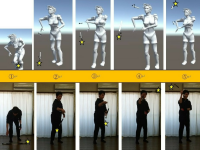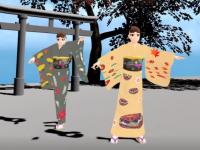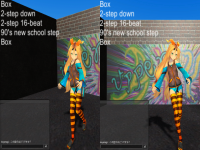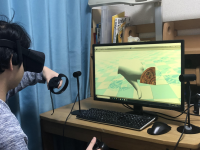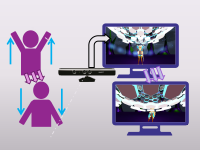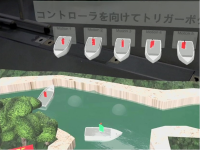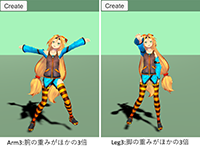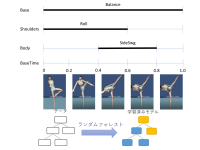| CG Expression of Nunchaku Performance by Motion Capture |
In this study, the motion of nunchaku action was expressed by 3DCG as the motion of a tool moving along with the motion of a human body. The basic motion of nunchaku action was measured using an optical motion capture system, and an attempt was made to reproduce the action of vertically swinging nunchaku with 3DCG.The motions of the human body and the nunchaku were measured at the same time, and the body's motions were then edited and output as data in the form of a skeleton.Three markers were attached to the tips of the two handles of the nunchaku, and the position and angle of the club part of the nunchaku were were calculated from the position coordinates of these markers using the inner product and outer product.The motion of the human body and the nunchaku were integrated into a single development environment and expressed as CG animation.Six people evaluated the created CG animation and answered a questionnaire on their understanding of and interest in the nunchaku performance. From the results, although the demonstration video gave an incomplete impression without the nunchaku's chain part, the effects of intriguing the participants and deepening the their understanding of their motion were achieved as expected.
